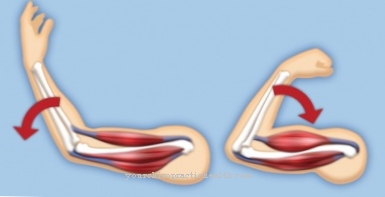Jumping into cool water on a hot day is beneficial for people. The same thing happens when he steps near a warm fire out of extreme cold to warm himself up. That this difference is perceived in this way is due to the body's own warmth and the body's independent acclimatization. Every human organism has a fairly constant body heat, the temperature of which is initially independent of the outside world.
What is the body heat?

In the animal world there are endothermic and ectothermic animals. Those in the first category produce heat independently, while those in the second get their body heat almost entirely from the outside world and environment. Mammals and birds are called homoiothermic because they keep their body temperature at a constant and constant high level. Invertebrates, fish or reptiles, on the other hand, are considered poikilothermic, as their body temperature passively adapts to the outside temperature and also changes with it. Finally there are heterothermal animals to which z. B. the platypus or various insects belong. They can only regulate their body temperature for a short time and to a very limited extent.
The human organism has regulatory mechanisms to adjust its own body to the different outside temperatures in order to a. also to protect against overheating or hypothermia. It produces heat, which in turn depends on the supply of energy.
Warmth is mainly generated by food intake, which is oxidized and burned in the organism. The food in the body must also burn to move the muscles and generate mechanical energy. The combustion energy is low, the remaining energy is converted into body heat.
This happens in the mitochondria, which are contained in every cell in the body and are considered to be the organism's power plants. Due to chemical cycles in the body, oxygen through breathing and carbohydrates from food are converted into water and CO2. This process creates energy that is converted into heat. This heat in turn is divided into electrical energy and kinetic energy.
In this sense, from a technical point of view, humans function like a biological reactor with its own body temperature of around 37 degrees Celsius. Since the ambient temperature is usually lower, the human body is constantly giving off heat.
Even when the outside temperature rises, the work of breathing and circulation increases and leads to increased body heat. The more the organism is stressed or used, the more body heat is generated. The skin in particular plays an important role in the body's heat dissipation. Likewise the blood circulation and the body size.
Function & task
Heat is transported through the bloodstream in the body. The flow of body heat is therefore only possible when the skin temperature is lower than the temperature of the core of the body.
Body temperature is always related to body heat, but it is not always the same even within the body. This is because the organs in the body's core such as the liver, heart, brain and kidneys are basically the places where the heat is generated.
Although their mass only makes up about eight percent of the total body mass, their heat-producing share in a state of rest is over seventy percent. On the other hand, the muscles and skin make up over fifty percent of the body, but provide less than twenty percent of the heat when the organism is in a state of rest.
Arms and legs, also called extremities, and the entire skin belong to the area of the body shell that is not firmly outlined. The expansion depends on the outside temperature and during physical activity, more heat is generated in the body shell than in the core of the body.
To perceive the temperature, humans have a sense of warmth and cold. There are also hot and cold spots in his skin, underneath which are nerve cells whose chemistry changes with the change in temperature. When this happens, signals are sent to the brain and body heat is re-regulated.
You can find your medication here
➔ Medicines for cold feet and handsIllnesses & ailments
The human body is very sensitive to changes in temperature. A body temperature that is too low or too high is always a sign that something is wrong. If the temperature rises, it is called a fever. The heat dissipation increases through sweating and increased blood circulation. If the temperature is above 40 degrees Celsius, it can even lead to death.
Conversely, a temperature that is too low is a disorder that manifests itself in cold hands or feet that do not get warm even when heated. The person feels cold inside. Medicine then speaks of hypothermia, which many people do not notice out of habit.
A lack of body heat is an indication of poor circulation. The blood vessels constrict and the heat that is transported through the blood does not reach the regions where it is supposed to heat up, including the hand or foot. A lack of body heat is often triggered by stress or tension, deficiency symptoms or smoking nicotine.
Since the human organism always tries to maintain a temperature of around 37 degrees Celsius, it reacts to temperature fluctuations with its own effect. In the case of hypothermia, for example, it ensures less blood flow to the skin, hands and legs and reduces heat dissipation by contracting the muscles. This creates a chill, which in turn produces new heat.
























.jpg)



